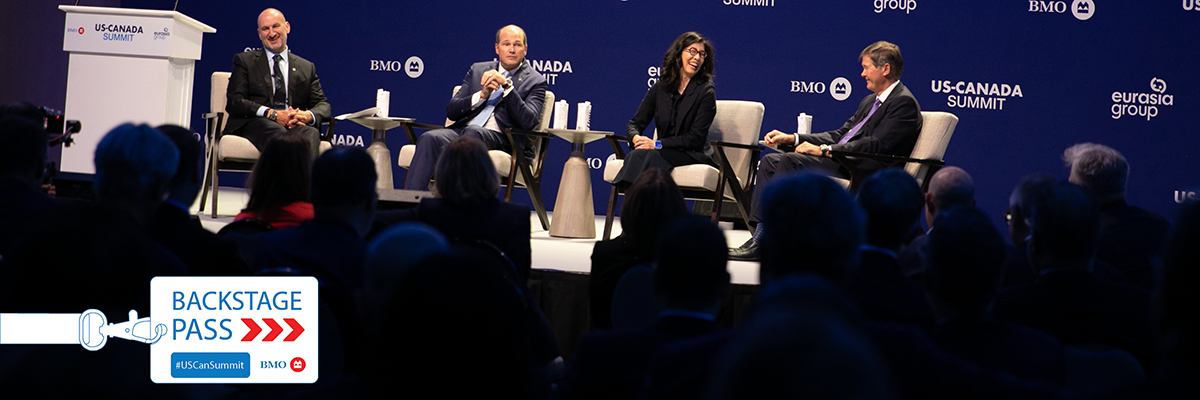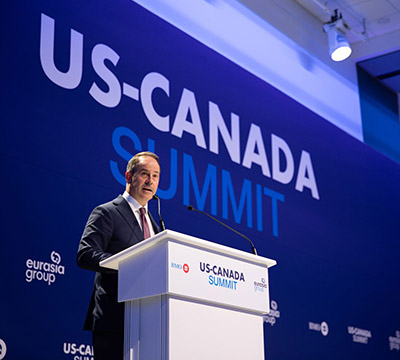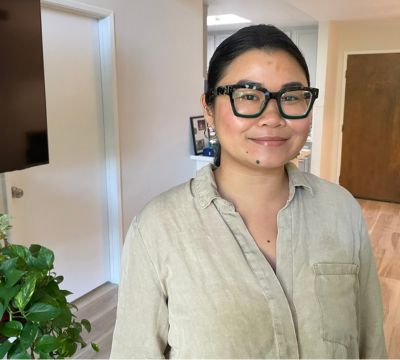2025 US-Canada Summit: Investment leaders share how they’re staying agile through global shifts
Today’s business environment continues to evolve – and Team BMO is committed to providing guidance and expertise to help our clients navigate these times. That’s why it was crucial for BMO to bring business and political leaders together at the third annual US-Canada Summit, held in partnership with the Eurasia Group, and get answers on the biggest issues facing our two nations.
Below, we’re sharing the latest insights surrounding where long-term investment lies today in Canada and the U.S., and future opportunities for growth. Read on to learn more!
Case in study: Canadian pension funds
Nobody knows the challenges and opportunities for investment and asset growth more than the major players in the Canadian pension space. That’s exactly who Alan Tannenbaum, CEO and Group Head of BMO Capital Markets, gathered to share their unique perspectives on geopolitical risk and global market volatility.
Participants included:
- Blake Hutcheson, President and CEO, Ontario Municipal Employees Retirement System (OMERS)
- Deborah Orida, President and CEO, PSP Investments
- Jo Taylor, President and CEO, Ontario Teachers’ Pension Plan (OTPP)
Alan opened the discussion with a candid question: In this evolving investment climate, what opportunities and challenges remain?
All panelists agreed that while volatility is not a new concept, the current environment feels structurally different. Despite this, the biggest opportunity lies in maintaining flexibility in global asset allocation, and diversifying where possible, since risk remains as uncertain as ever.
“We’ve all lived through cycles and recessions, but we need to ask – is what we’re looking at a passing moment, or more structured? As a pension plan looking at a horizon of 25 years, we must ask those questions,” explained Jo.
Despite the uncertainty, Blake still sees the U.S. as “the most investible place, particularly in the short-term” – and notes that U.S. investment still accounts for about half of OMERS’ portfolio.
Reinvesting in the Great White North: Canada’s growing appeal
When asked about ideal places to diversify, the shared sentiment was that more opportunity lies in Canada than seen in previous years – and a lot of it comes from the federal governments’ commitment to invest in infrastructure and defence. “There’ll be more opportunities in the next four years than we’ve seen in the last 25 years,” said Blake.
Deborah and Jo also echoed their interest in leveraging their home-ice advantage. “Thirty-five per cent of our fund is invested in Canada – and there’s lots of great reasons to invest here. I’d be pretty keen to invest in Ontario – it’s our home province and many of our stakeholders are here,” added Jo.
Private markets and inflation-resilient strategies
Alan pointed out that Canada’s pension infrastructure is considered a leader in the shift to private versus public portfolios – and inquired how the practice is adjusting to today’s markets.
For the panelists, private credit, infrastructure and real assets continue to play a critical role in portfolio construction. While private equity deal flow has slowed, credit and infrastructure remain attractive, particularly when aligned with long-term liabilities. The conversation also touched on the importance of balancing public and private exposures to optimize risk-adjusted returns.
Regarding public investment, each panelist highlighted the importance of maintaining that exposure while still examining where the best risk adjusted returns lie. “There are times where we look at the risk adjusted returns and choose to invest in debt – simply because it’s a better return,” Jo added.
Jo also highlighted the value of diversification from a public market point of view; when one market is doing well, it can offset others that are not. “In our case, we’re doing a bit more investment across sectors because we have more agility,” he added.
Artificial intelligence: A strategy, not a trend
Alan concluded the discussion by seeking insights from the panelists on AI in the pension and investment space, and its growing impact across investment and operational domains. Blake, Deborah and Jo agreed that AI presents immense opportunities for the pension sector. Internally, teams at OTPP are already relying on their in-house experts to leverage AI to drive efficiencies and enhance decision-making. “There are winners and losers around AI,” Jo said, “and it’s our job to be more in the former camp.”
The focus is on helping portfolio companies navigate disruption and identify where AI can create—or erode—value. The general consensus? AI is not a passing trend, but a fundamental shift that demands thoughtful integration.
After moderating the Investing in the Future discussion, Alan stopped by the US -Canada Summit video booth and shared his optimism and outlook on where markets will be in 2026.
By bringing internal and external experts together and fostering these discussions, we’re doing our part to contribute to more understanding, awareness and a greater ambition for North America’s place in the world.
For more insights on the discussion, visit the Capital Markets Insights blog.








